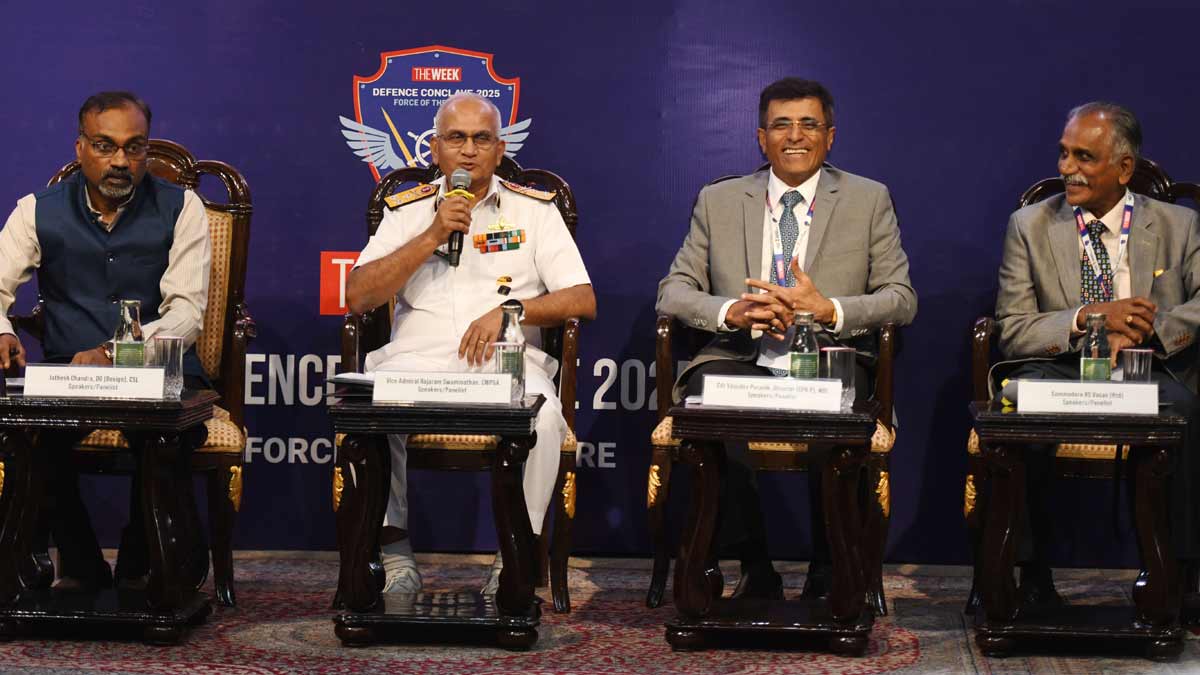India Urged to Boost Warship Production Amid Global Demand

In response to escalating maritime security challenges and global supply chain issues, senior naval officials and shipbuilding experts are advocating for immediate action to enhance India’s warship-building capabilities. During the recent THE WEEK Defence Conclave, experts highlighted the importance of strategic investments and technological advancements to position India as a key player in global naval manufacturing.
Urgent Need for Strategic Investments
Vice Admiral Rajaram Swaminathan, the Controller of Warship Production & Acquisition (CWP&A), emphasized the increasing demand for warships due to asymmetric threats and heightened pressure on global sea lanes. He pointed out that with shipbuilding capacities worldwide under strain—Chinese facilities fully booked and European yards at capacity—countries are now looking towards Japan and South Korea for naval solutions. “India must seize this moment to revive its shipbuilding ecosystem and establish itself as a reliable supplier,” he stated, underscoring the necessity of securing vital sea lines of communication.
Commodore RS Vasan (Retd), Director General of the Chennai Centre for China Studies, drew attention to the stark contrast between India and China in shipbuilding capabilities. “China constructs over 51% of the world’s ships, while India contributes less than 1%. The difference is staggering,” he remarked. With China boasting 330 warships and advanced technology, Vasan questioned why global partners would turn to India unless it could offer similar scale and efficiency. He urged for a comprehensive strategy to enhance India’s shipbuilding infrastructure.
CDR Vasudev Puranik, Director (Planning & Personnel) at Mazagon Dock, provided context for the disparities in shipbuilding between the two nations. He noted that both countries began as agrarian economies, but China transitioned to manufacturing in the 1990s, while India was not prepared for such a shift. “In the next 20 years, we’ll have a robust ecosystem to support conventional submarine construction if we start making efforts on building our own production system,” he asserted, emphasizing that the capability exists and needs to be developed into a cohesive system.
Overcoming Challenges in Domestic Shipbuilding
Jathesh Chandra, Director General (Design) at Cochin Shipyard, addressed the practical challenges faced by Indian shipyards. He noted that nearly all of India’s naval vessels are now built domestically, with around 65 Navy ships currently under construction. While acknowledging past cost overruns and delays, Chandra expressed optimism, stating that these experiences have provided valuable lessons. “We now have the knowledge and experience to move forward with greater efficiency,” he affirmed.
The consensus among the speakers was clear: India must take decisive action to cultivate a resilient and future-ready shipbuilding industry. This industry should not only cater to domestic needs but also strengthen partnerships with global allies. As the demand for naval capabilities continues to rise, the time for India to enhance its shipbuilding prowess is now.
